Peripheral veins in the legs are affected by a sedentary lifestyle, being overweight and having various chronic diseases.
Varicose veins are very dangerous and accompanied by pain.In later stages, trophic ulcers appear and venous insufficiency of the deep vessels develops.It is important to recognize varicose veins in the early stages.This will help carry out gentle therapy and significantly improve the quality of life.
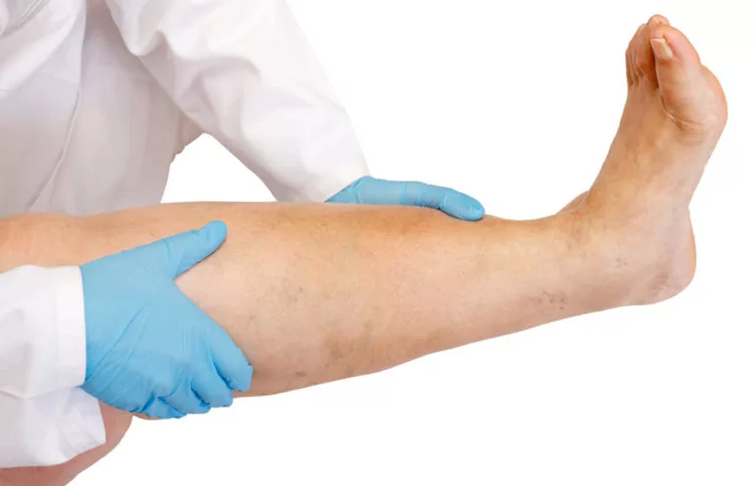
Let's take a closer look at varicose veins in the early stages in the photo in the article.
Characteristics of the disease
The initial stages of varicose veins occur without obvious changes and are almost asymptomatic.In 70% of patients, venous pathology was diagnosed in the third or fourth degree, when the condition can only be relieved by surgery.
In the weaker sex, varicose veins are more common because women are more susceptible to hormonal disorders.Men suffer from a complicated form of testicular varicocele - varicocele.But the most common form is considered to be pathology of the veins in the legs.
Varicose veins of the uterus and lower rectum - hemorrhoids - are very dangerous.These forms often occur in women during pregnancy and do not always disappear after childbirth.
Varicose veins in the body develop in the following stages:
- For some reason, the valve responsible for blood flow stops working properly and the blood vessel walls weaken.
- Due to weak outflow, blood circulation slows down, blood clots form in the veins, and pressure on the walls of weakened blood vessels increases.
- The spaces narrow and the blood does not have time to pass through the veins in the necessary volume.In places where blood accumulates, the vein walls stretch.
- Due to expansion, the upper walls of the venous system move closer to the epidermis and become more visible.The skin becomes exhausted and dry.
- The areas where blood clots accumulate become larger and larger, the veins stretch and become "twisted".
As varicose veins progress, the veins look like thick purple strings, clearly visible and protruding above the skin's surface.Nutritional ulcers appear on the cover, which do not heal for a long time and begin to fester.The disease develops into thrombosis or venous insufficiency.
It is important to diagnose the disease in its early stages, when treatment can be gentle.
Cause of the disease
There are more than fifty reasons that can cause changes in the venous system.People whose occupations cause stress on the legs and a sedentary lifestyle are especially susceptible: salespeople, hairdressers, programmers, accountants, drivers.
Scientists have conducted many years of research and identified the main factors that cause varicose veins:
- Hormonal changes in the body: pregnancy, menopause, adolescence.
- Obesity of any degree.
- Genetic predisposition.70% of children whose parents have varicose veins will have varicose veins.
- Weak muscle system.
- Wear uncomfortable underwear: tight elastic socks, tight underwear for men.
- Lack of activity and physical activity.
- Habit of crossing one leg over the other when sitting.
- Rare changes in body position: prolonged standing, lying, sitting.
- Chronic diseases: diabetes, increased blood viscosity.
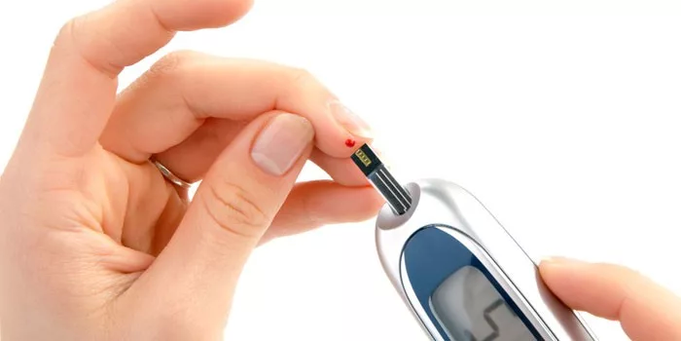
Out of ten people with varicose veins, eight are female.The weaker sex is more susceptible to venous diseases due to hormonal disorders during pregnancy, after childbirth and during menopause.The second important factor that causes women to have foot pain more often than men is their preference for wearing high heels.
Men are more susceptible to the disease due to being overweight, liking fatty foods, spicy foods and a sedentary lifestyle.
Symptoms of venous disease
In the early stages, the disease has no obvious symptoms and is difficult to recognize.In the photo below you can see the early stages of varicose veins.What's notable is that there were practically no changes.
The disease can only be diagnosed by ultrasound of the lower limbs.The first stage has different symptoms, related to the location of the disease.
According to localization, varicose veins are divided into types:
- Venous pathology of the seminal vesicles.Varicocele develops in men starting in adolescence.In the early stages, the first sign is the different size of the testicles.The size difference is acceptable, but small.
- Varicose veins of internal organs.The intestines and uterus are susceptible to venous disease.Genetic predisposition or portal hypertension contributes to the disease.In the early stages, it is difficult to diagnose because there are no major symptoms.
- Varicose veins in the lower rectum are hemorrhoids.In the early stages, a person feels pain when going to the toilet, walking and doing physical activity.There may be bleeding from the anus.
- Venous disease in the legs.It is more common than other species.
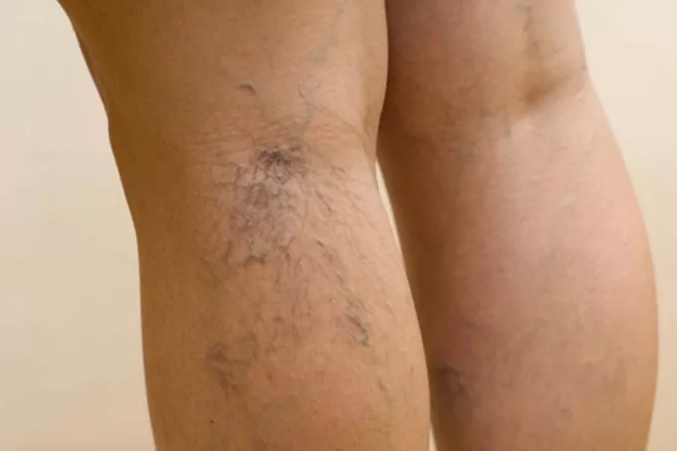
Varicose veins in the legs affect men and women of all ages.People with a genetic predisposition have observed vascular changes in adolescence (16–17 years).
Among the first signs of varicose veins in the lower limbs are:
- By the end of the day, the legs swell and a feeling of heaviness appears.
- In areas where the veins are swollen, there may be mild itching and peeling of the skin.
- At night, cramps appear periodically.
- Dull pain after exercise.
- Light pressure with your fingers will cause pain.
- Spider veins appear in a number of places.
- The veins are tender to palpation.
In later stages, the veins swell and become more visible.When touched, the person feels pain.The vases gained stiffness and became more ornate.Swelling in the evening spreads to the ankles and feet.A person experiences persistent pain and his legs quickly tire.
If treatment is not started in the early stages of the disease, blood vessels will rupture in some places.A blood clot appears.The skin becomes depleted and resembles a thin sheet of paper.The affected areas become covered with ulcers.In the most severe cases, bleeding begins and gangrene forms in the legs.Amputation will be required immediately.
The success of treatment depends on the stage of the disease at diagnosis.It is important to contact the phlebologist promptly and get recommendations.The treatment method chosen depends on the hemodynamics of the disease.The patient is required to undergo diagnostics: ultrasound, duplex angiography, radionuclide testing.
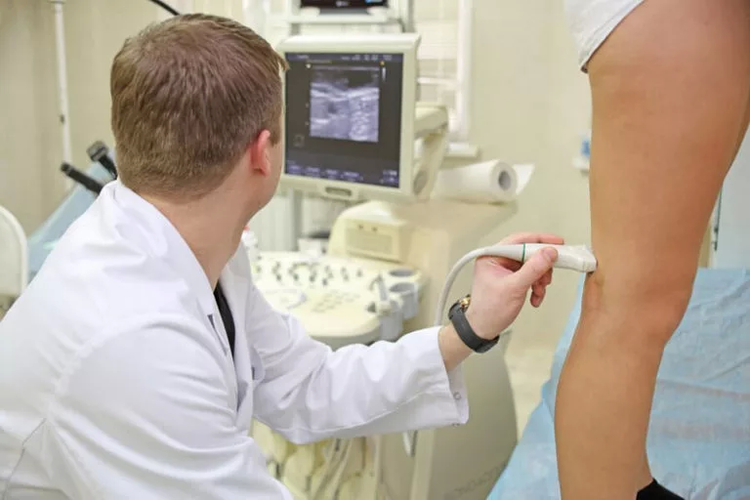
Treatment
Depending on the severity of the disease, location of localization and general clinical picture of the patient, one of the following treatment methods is chosen:
- Conservative.These include exercise, treatment with natural remedies, intravenous injections, and wearing special compression garments.
- Compressive sclerotherapy.A special medicine is injected into the vein, which helps fill damaged blood vessels and glue torn walls back together.
- Surgical intervention.Includes different techniques suitable for treatment at any stage of the disease.
The early stages of varicose veins respond well to conservative treatment.The patient is prescribed physical activity and chooses special underwear.Efficiency increases when traditional methods are used simultaneously.Laser therapy is suitable as a corrective cosmetic procedure.
Rules and recommendations
At the initial stage of varicose veins, the patient should follow the following rules:
- Walk once or twice a day.You should walk at a calm pace, periodically stopping to rest.
- Wear comfortable shoes with heels no higher than 3 cm.The upper part of the shoe should not have a compression device, and the laces should not be tied as tightly as possible.
- They participate in workouts at the gym twice a week.Loads are selected individually by the doctor and trainer.
- Review your diet.Products containing a lot of sugar, fatty meats, flour products and starchy vegetables are excluded from the food.Most of the diet of patients with varicose veins consists of steamed or boiled vegetables.Fried and spicy foods are not recommended.
- In the evening, your feet need to rest.The amount of bleeding will increase if you lift your legs and throw them on a high pillow or the back of a sofa.
- If the work requires little movement, it is recommended to lubricate the legs with a refreshing gel or ointment containing heparin.
- Special compression garments or elastic bandages are used daily.Special underwear selected by the doctor.The specialty of compression underwear is its compression function.Pressure on the body occurs with different intensity forcing the blood to circulate forcibly.
- Change positions frequently.If you have to sit continuously for work, stand up and sit down a few times every 30 minutes.Exercise will help prevent varicose veins and hemorrhoids.

Simple recommendations will help prevent the development of venous pathology at the initial stages.
Drug treatment
In the early stages of varicose veins, the skin is not yet exhausted.Dryness and peeling can be avoided by using a mild gel containing moisturizing oils to wash your feet.As a cheap remedy, children's soap is used, after which the skin is wiped and lubricated with children's cream.
Creams containing herbs have an effective effect: chamomile, chamomile, celandine.Do not use alcohol wipes to clean your feet.They dry out the skin and contribute to its weakening.
In the early stages, ointments and gels with a light texture are used.Among the effective ointments are:
- Troxerutin.
- Heparin sodium.
- Horse chestnut gel.
Ointments and gels give elasticity to blood vessels, dilate them and strengthen their walls.After application, the feeling of heaviness disappears, the pain subsides, and the swelling gradually decreases.
In combination with ointments, it is recommended to use blood thinners.Blood thinners are not recommended for pregnant and breastfeeding women.
For better heart function and strengthening blood vessels, multivitamin therapy, fish oil, vitamins A and E. Vitamins are taken twice a year: in autumn and spring.
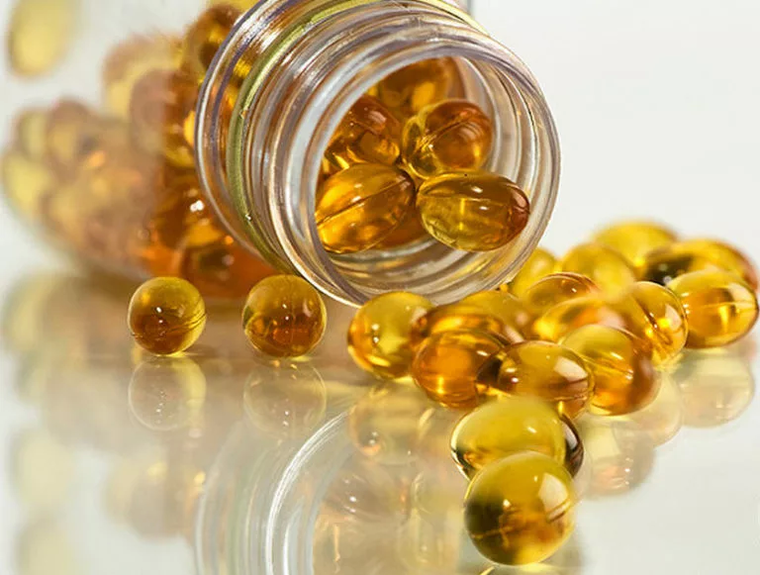
Folk remedies are used in combination with medications.
Traditional method
Herbs and natural ingredients are effective in preventing and treating varicose veins in the early stages.It is important to use folk remedies regularly and long term.
Relaxing foot bath
To prepare the bath you will need: three drops of lavender and geranium oil, 2 tablespoons of sea salt, 200 ml of chamomile decoction.The ingredients are poured into a warm water bath for the feet.Soak your feet in hot water for 25 minutes, then wipe thoroughly and lubricate with troxerutin.
The benefit of the procedure will increase if the bath is carried out before bedtime.Oil and sea salt help strengthen blood vessels, firm and give elasticity to the skin.
Compress with herbal decoction
To prepare a decoction, you will need dry herbs: calendula, mint, lemon balm, sage, St.John's wort.Divide the herbs into equal parts (2 spoons each) and put them in a thermos, pour the mixture with 1 liter of boiling water.The infusion should be maintained for 3 hours.
The broth is filtered.A compress is moistened and applied to the area with varicose veins.The compress must be kept until dry.The sore spot is lubricated with baby cream.
Lilac tincture
Fresh lilacs are placed in half-liter jars.What flowers should I use?entire container volume.Everything is filled with vodka and placed in a dark place for 20 days.The finished tincture is filtered.Take 20 drops three times a day before meals.
Alcohol cleanses blood vessels, helps strengthen the walls and normalizes blood circulation.
Compress fresh tomatoes
Tomatoes contain a valuable element - lycopene, which gives the fruit its bright red color.This substance helps strengthen blood vessel walls.
To prepare the compress you will need 1-2 tomatoes.The amount of vegetables depends on the size of the affected area on the leg and the size of the tomato.Tomatoes are chopped through a meat grinder or ground in a blender.
The finished pulp is spread on a gauze napkin, tied to the leg.The compress should be kept for 1 hour.After that, the feet are washed with warm water and lubricated with moisturizer.
Vitamin mixture for healthy heart and blood vessels
In the early stages of varicose veins, it is important to support the functioning of blood vessels and the heart.To prepare the vitamin mixture, take the following ingredients: 2-3 figs, honey - 2 tablespoons, 1 lemon with peel, 1 teaspoon ginger root, 3 cloves of garlic.
The ingredients are passed through a meat grinder and mixed thoroughly.The vitamin mixture is consumed 1 teaspoon per day, in the morning after meals.
In the early stages, varicose veins can be cured using traditional methods, but it will take time and patience.
Aesthetic correction
In the early stages, varicose veins appear as unsightly spider veins on the legs.From an aesthetic point of view, this symptom causes discomfort, especially if the woman's profession is related to the beauty of the legs.The photo below shows legs with spider veins.
There are several ways to get rid of spider veins on the legs:
- Sclerotherapy.
- Burn electricity.
- Use BBL broadband lighting.
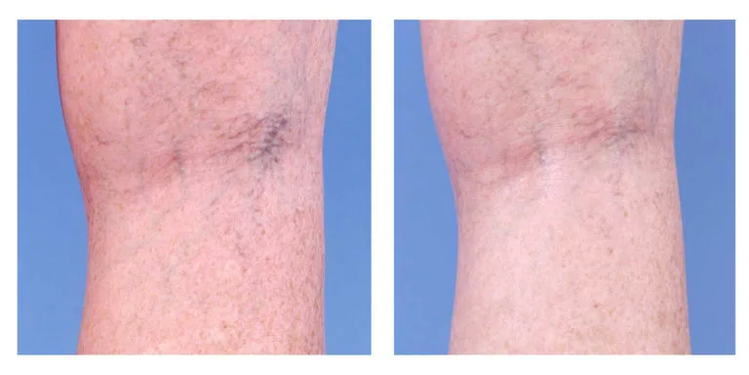
The simplest and safest method is to remove spider veins with a laser.This therapy uses rays that are absorbed only by blood vessels and do not affect the skin and other tissues.Light energy enters the vessel and is converted into heat.Due to high temperatures, the walls shrink and the mesh disappears.
Laser correction is quick and painless.The device is applied to the site of the vascular network and applies light pulses.Therapy is also effective in removing deeper vessels, with second-degree varicose veins.Maximum editing time is no more than 30 minutes.To remove the mesh, you will need 1-2 procedures.
To avoid overheating the skin, special freon is sprayed onto the skin.After laser exposure, mild itching and inflammation may occur.Symptoms will disappear on their own within a few days.
The early stages of varicose veins are rarely diagnosed because the disease occurs without obvious symptoms.But timely treatment will be more effective.Varicose veins progress rapidly and in the later stages can only be treated with surgery.

























